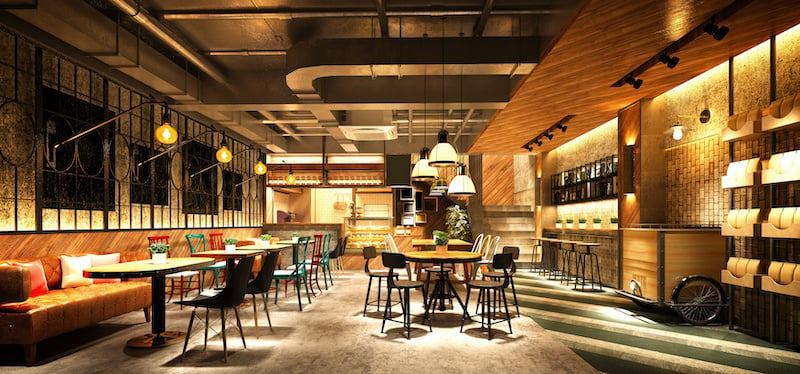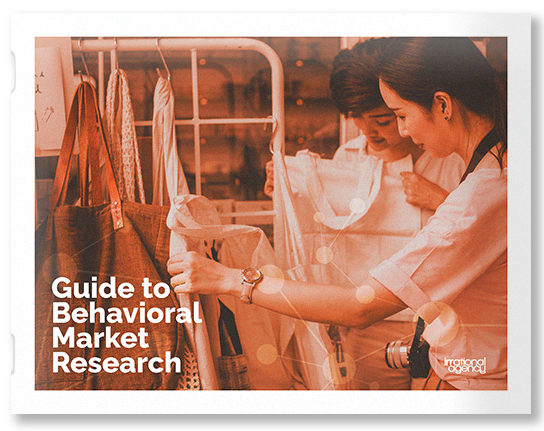
5 Ways Your Competitors are Nudging Your Customers with Applied Behavioral Science
 Irrational Agency
Irrational Agency
While we often ask consumers to rate their level of interest in a new product, service, or brand, there are massive gaps between what humans want, say, and do.
New Year's resolutions are a perfect example. We genuinely want to lose 20 pounds and exercise at least 5 days a week, but the reality of acting upon those goals is not always what we articulate. Whether it is willpower, fatigue, rationalization, or our best intentions fading into the woodwork when chronic life stressors come into play, these desires do not always (or ever) translate into transformative behavior. So, why do we operate under the impression that surface-level survey responses among a selected group of people (and its subsequent deducted and speculated results) are reliable sources and thus bases for making important business decisions?
While traditional market research, KPIs, and NPS tracking are most effective in studying the more measurable rational behaviors and responses to more direct studies, there is still so much to be uncovered within the human irrational thinking mind and its dictated irrational behaviors and patterns. Therefore, we must evolve and incorporate an understanding of the irrational in our studies as well in order to delve into the depths of consumer and general human behavior.
Enter: Behavioral Science
Behavioral science encourages a more controlled and analytical approach to uncovering human psychological and sociological behavior and acts as a window of insight into how branding and environment may modify a consumer's conduct.

For instance, a consumer entering a sleek, modern café with piano music, cozy chairs, the smell of coffee brewing is much more willing to pay an upscale price for a cup of joe than they would be had they entered a diner-style coffee shop with red plastic chairs and concrete walls. Additionally, we need to know if the consumer already has a value-based relationship or lifestyle habits with the coffee brand and is therefore biased. The bottom line is, without utilizing any behavioral science framework and simply asking how much consumers are willing to pay for a cup of coffee without any context or environmental considerations will not reveal accurate results or a price premium. Context is everything!
Irrational and Rational Thinking
Humans take different actions based on atmosphere and stimulus - so as researchers, we need to consider the irrational as much as the rational. Think about how many people fear flying more than stepping behind the wheel of the car - even though research shows that flying is overwhelmingly safer. The only way to change consumers' actions is to identify and understand their deeper feelings, impulses, fears, and decision-making fully.
The most innovative researchers and your competitors are expanding their toolbox to incorporate behavioral science market research practices and frameworks to more precisely predict consumers behaviors within the marketplace.

Here are 5 ways your competitors are using behavioral science frameworks in their research to persuade customers to choose them over you.
- They postulate theories and test them.
You probably already know a lot about your segment from big data and previous studies - instead of asking prospective customers the level of acceptability of a new product or service, ideate over what the current patterns and experiences are within your category. Instead of just considering what information we want to discover from our study and from what part of our audience, we must ask what types of attitudes and behaviors this brand and category change. After all, from an insider's view, it may be more beneficial to create your own hypotheses to test - They use big data.
There is an abundance of it to leverage, but that doesn't mean you need to use it all. Since it comes from a myriad of sources (customer databases, web analytics, emails, social networks, and more), big data is all about actions. It provides more accurate evidence relevant to the present activity in comparison to asking for a simple forecast from your existing or prospective customers. What is also attractive about big data is that it is a passive measurement that you can investigate for trends and movements that may impact a newer product or service adoption. Diving a bit deeper, consumer cookie data and media consumption is part and parcel of examining the current ecosystem and influences - just like a sociologist may gather data on a religious order or tribe. - They employ behavioral science frameworks
There are lots of frameworks - the Irrational Agency Team developed two ourselves: ASIF - Availability, Superiority, Imagination, Fit and DSCE - Desire, Strategy, Choice, Experience. There is also EAST, COM-B and MINDSPACE - do you know which one is right for your business question? EAST, developed by the Behavioral Insights Team, is a generic framework used in the industry and is an acronym for a checklist of items to reflect on when trying to change behavior.
- E for Easy – Make the message clear and understandable with a sense that this shift is more of a "go with the flow" movement than any actual change.
- A for Attractive – The behavior or product change must capture the users' attention as one that is pleasing and appealing.
- S for Social – Humans are very social creatures. We need to know that this behavior or product is something others are using - particularly those in our social network.
- T for Timely – Take into account timing and consider when groups of people will be most receptive to a product or service to create interventions and offerings. Most marketers know that finding the right time to nudge via email or post has significant results.
- They use control groups
The advantages of a control group are much like the benefits of putting the new product or service in a setting. Your competitors have discovered that if some respondents already have a positive brand perception, the brand will bleed into any new development or service introduction. It is extricable to separate emotions for the brand versus the product or service. By using an unexposed control group in your next study, it is possible to distinguish the additional value of a concept without brand impact. It will also more clearly define the value of one concept iteration over various others. - They explore new terrain.
You may know plenty about your current customers, but who are the potential customers you have not reached? What prompts them to try a new product? What do they crave? What media do they consume? What apps and websites appeal to them? Who are their trusted messengers – family, friends, colleagues, social media, etc.? To promote and capture consumer behavior in marketing, knowing all aspects of your untapped customers is crucial. If you think like a scientist, you compare, contrast, and observe the activities of all groups.
Because humans seamlessly switch between gut-level and conscious, logical thinking in every decision process, it is critical for your market research endeavors to have both types quantified. One of the most effective ways to do that is through behavioral science market research. One of the most innovative ways marketing can deliver on successfully changing minds and behavior is knowing what is motivating actions now. Get ahead of the curve and take a look at our extensive 30-page guide to behavioral market research. Click to download.

